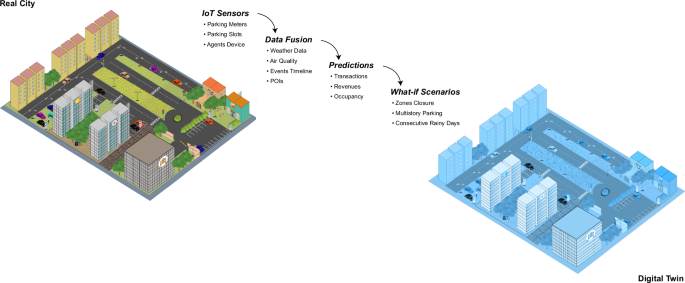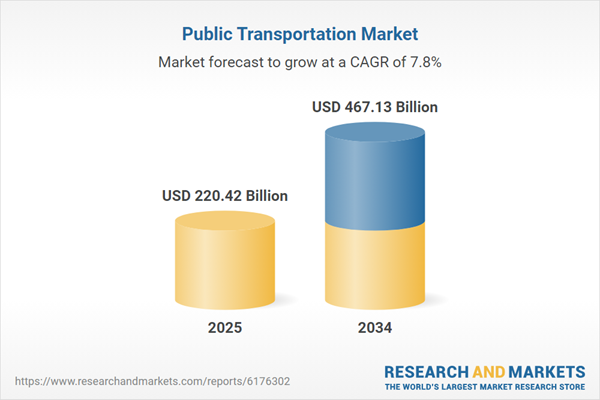Report on Urban Remediation and Sustainable Development in Langford
1.0 Introduction: Addressing Urban Decay in Alignment with SDG 11
The City of Langford is implementing remedial actions to address derelict properties, a critical step towards achieving Sustainable Development Goal 11 (Sustainable Cities and Communities). Recent municipal actions target vacant and dilapidated buildings that detract from public safety, community well-being, and sustainable urban development. The city’s strategy focuses on transforming blighted areas into safe, resilient, and inclusive environments, directly addressing the negative perception of certain areas as a “slum city.”
2.0 Case Study: Dunford Avenue Properties
Two properties on Dunford Avenue, comprising nine derelict structures, have been officially declared a “nuisance” by the municipality. This action is a direct response to challenges impacting the city’s progress towards key SDG targets.
2.1 Municipal Enforcement and Remedial Action
- The property owner, 1318296 BC Ltd., has been issued a 60-day order to undertake remedial action.
- Failure to comply will result in municipal intervention at the owner’s expense, which may include the demolition of all buildings and the removal of foundations.
- This enforcement aligns with SDG 11.3, which calls for inclusive and sustainable urbanization and the capacity for participatory, integrated, and sustainable human settlement planning and management.
2.2 Impact on Community Safety and Well-being (SDG 3 & SDG 11)
The condition of the vacant buildings has led to significant public concern, undermining community health and safety.
- Public Safety Risks: Since November 2023, numerous complaints have been filed regarding trespassing, graffiti, illegal dumping, and unauthorized use of the buildings for shelter, posing a significant fire risk. These conditions contravene the principles of SDG 11.7, which aims to provide universal access to safe, inclusive, and accessible green and public spaces.
- Psychological and Social Impact: Residents report a significant “emotional toll” and a feeling of living in a degraded environment. This directly impacts SDG 3 (Good Health and Well-being) by creating stress and reducing the quality of life for neighboring citizens.
3.0 Broader Economic and Social Implications
The presence of derelict properties extends beyond a single location, representing a systemic challenge to Langford’s sustainable growth.
3.1 Economic Viability and Investment (SDG 8)
Municipal councillors have expressed concern that the appearance of an “abandoned” downtown core could deter investment. This situation poses a threat to SDG 8 (Decent Work and Economic Growth) by creating an environment that is not perceived as a thriving community worthy of investment, thereby hindering local economic development.
3.2 Systemic Issue of Urban Blight
A municipal report acknowledges that the Dunford Avenue case is part of a “broader pattern of vacant redevelopment properties across the city.” Resident testimonies concerning other properties, such as those on Brock Avenue and Strathmore Road, highlight escalating safety, economic, and environmental costs, including:
- Increased physical hazards and strain on public service budgets (RCMP and bylaw enforcement).
- Attraction of vermin, squatters, and criminal activity.
- Degradation of neighborhood property values and community pride.
These cumulative impacts represent a significant barrier to achieving a sustainable and resilient urban environment as envisioned by SDG 11.
4.0 Proactive Governance and Future Policy (SDG 16)
In response to these challenges, the City of Langford is developing a forward-looking policy framework to ensure that future development is managed sustainably. This demonstrates a commitment to SDG 16 (Peace, Justice and Strong Institutions) by building effective, accountable, and inclusive institutions at the municipal level.
4.1 New Policy Initiatives
- Construction Impact Management Strategy: A strategy to ensure development activities are considerate of existing neighborhoods.
- Good Neighbour Policy: A new policy, with bylaw amendments expected in the fall, to encourage the timely removal of vacant buildings and mandate comprehensive property maintenance prior to construction.
These proactive measures are designed to prevent the recurrence of prolonged dereliction and its associated negative impacts, ensuring that urban development contributes positively to the community’s long-term sustainability and well-being.
1. SDGs Addressed in the Article
SDG 11: Sustainable Cities and Communities
- The article’s central theme is the management of urban space in Langford. It discusses issues of dilapidated buildings, urban decay (“slum city”), and the impact on community well-being and safety. The city’s efforts to clean up properties, manage redevelopment, and implement new policies like the “Construction Impact Management Strategy” directly relate to creating sustainable, safe, and resilient urban environments.
SDG 3: Good Health and Well-being
- The article highlights the negative health impacts of the derelict properties on residents. It explicitly mentions the “huge emotional toll on the neighbours” and the “long-standing and escalating safety, economic, environmental, social and psychological costs.” These points connect the state of the urban environment directly to the mental and physical well-being of the community.
SDG 16: Peace, Justice and Strong Institutions
- The article showcases local governance in action. It details the city council’s response to a community problem, including declaring properties a “nuisance,” issuing compliance orders, and creating new bylaws and policies. This demonstrates the role of effective and accountable local institutions in enforcing laws and responding to citizen concerns. The mention of trespassing, squatters, and crime also touches upon the goal of ensuring public safety and justice.
SDG 8: Decent Work and Economic Growth
- The economic health of the city is discussed as a consequence of the urban decay. Coun. Kimberley Guiry warns that “a downtown core that looks abandoned” could discourage investors, which directly impacts local economic growth and development. The issue also degrades property values, affecting the economic well-being of residents.
2. Specific Targets Identified
Under SDG 11: Sustainable Cities and Communities
- Target 11.1: By 2030, ensure access for all to adequate, safe and affordable housing and basic services and upgrade slums. The article’s focus on the “slum city” nickname, dilapidated buildings, and properties being broken into “to create space to camp and hang out” directly relates to issues of inadequate and unsafe housing conditions. The redevelopment projects mentioned (condominium towers and an apartment building) are intended to create new housing.
- Target 11.3: By 2030, enhance inclusive and sustainable urbanization and capacity for participatory, integrated and sustainable human settlement planning and management. The city’s actions—giving the owner 60 days for remedial action, developing a “Construction Impact Management Strategy” and a “new Good Neighbour Policy”—are direct examples of human settlement planning and management. Residents like Bernie Armstrong and Heidi Viher participating in the process by speaking at council meetings or to the media shows a participatory approach.
- Target 11.6: By 2030, reduce the adverse per capita environmental impact of cities, including by paying special attention to … municipal and other waste management. The article mentions complaints related to “dumping,” “general unsightliness,” and attracting “vermin,” which are issues of waste management and the environmental degradation of the urban space.
Under SDG 3: Good Health and Well-being
- Target 3.4: By 2030, by one third premature mortality from non-communicable diseases through prevention and treatment and promote mental health and well-being. The article’s reference to the “huge emotional toll” and “psychological costs” inflicted on residents by the derelict properties directly connects to the promotion of mental health and well-being.
Under SDG 16: Peace, Justice and Strong Institutions
- Target 16.6: Develop effective, accountable and transparent institutions at all levels. The entire article is a case study of a local government (the City of Langford) taking action. The staff report, council meeting, bylaw enforcement, and development of new policies demonstrate the functioning of a local institution attempting to be effective and accountable to its residents.
- Target 16.7: Ensure responsive, inclusive, participatory and representative decision-making at all levels. The council’s decision to act on the properties is a direct response to “numerous complaints” from residents. The article quotes residents who spoke at the council meeting, showing that the decision-making process is participatory and inclusive of community voices.
3. Indicators Mentioned or Implied
Implied Indicators for SDG 11
- Number of vacant and dilapidated buildings: The article specifies “nine vacant and dilapidated buildings” on two Dunford Avenue properties and mentions other “egregious” properties on Brock Avenue, implying this is a trackable problem.
- Number of community complaints: The city’s action was prompted by “numerous complaints since November 2023 related to trespassing, graffiti, dumping and general unsightliness.” The volume and nature of these complaints serve as an indicator of urban blight.
- Implementation of urban management policies: The creation and implementation of the “Construction Impact Management Strategy” and “Good Neighbour Policy” are clear indicators of progress in sustainable urban planning.
Implied Indicators for SDG 3
- Qualitative resident testimony on well-being: Statements describing the “huge emotional toll” and “psychological costs” serve as qualitative indicators of the community’s mental well-being in relation to their environment.
Implied Indicators for SDG 16
- Number of bylaw enforcement actions: The article mentions “multiple warnings, compliance orders, bylaw penalties and enforcement actions” taken against the property owner. This data can be used to measure the institution’s activity and effectiveness.
- Public participation in local governance: The article notes residents speaking at the “Oct. 20 council meeting,” which indicates the level of civic engagement in decision-making processes.
Implied Indicators for SDG 8
- Investment in the downtown core: The concern that the area’s appearance could “discourage investors” implies that tracking new investments in the downtown core would be an indicator of economic health and confidence.
- Property values: The resident’s claim that the derelict lot “degrades our property values” suggests that local property valuation trends can be used as an economic indicator.
4. Summary Table of SDGs, Targets, and Indicators
| SDGs | Targets | Indicators (Implied from Article) |
|---|---|---|
| SDG 11: Sustainable Cities and Communities |
|
|
| SDG 3: Good Health and Well-being |
|
|
| SDG 16: Peace, Justice and Strong Institutions |
|
|
| SDG 8: Decent Work and Economic Growth |
|
|
Source: vicnews.com






